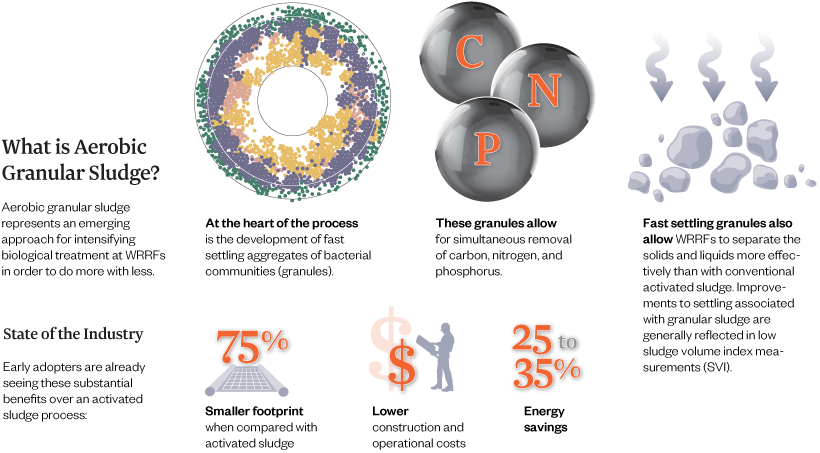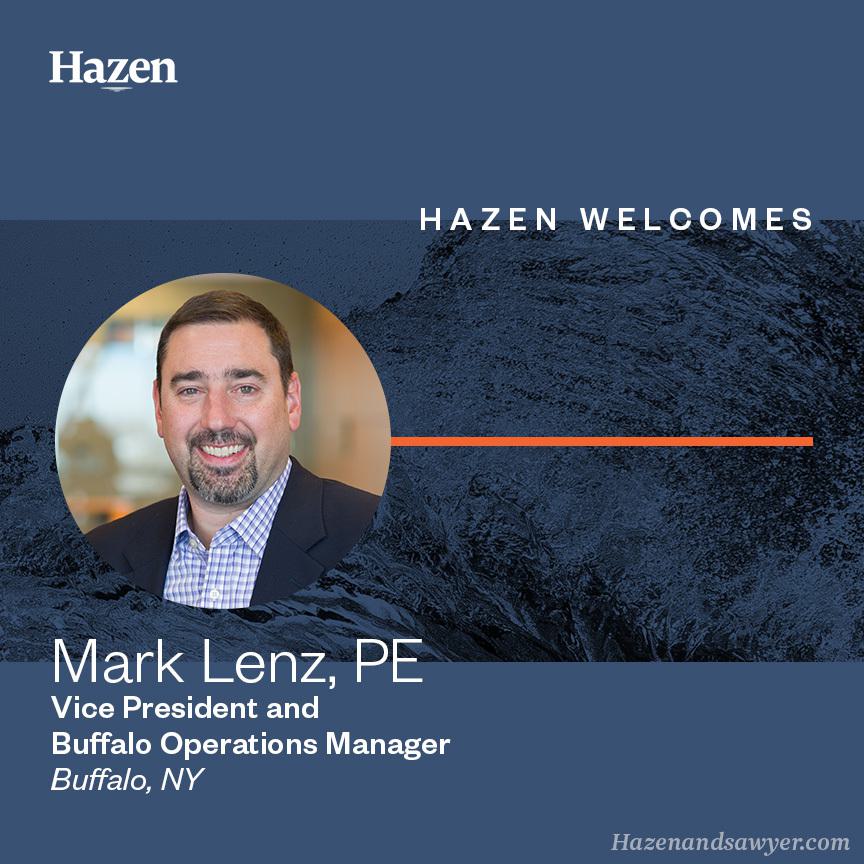Granular Sludge: A Promising Innovation for More Efficient Settling
Wendell Khunjar PhD, PE, Paul Pitt PhD, PE, Ron Latimer PE - Hazen and Sawyer, Kevin Gilmore PhD - Bucknell University

Aerobic granular sludge (AGS) represents a technology that allows for biological treatment intensification, thereby reducing footprint requirements, energy and operating costs as compared to traditional activated sludge technologies.
In AGS, biomass are enriched into dense aggregates, where stratification of biomass allows for multiple processes to occur within the granule.

To date, full-scale application of AGS has been limited to the approach utilized by one technology provider (NEREDA™). Much research is underway to develop alternative granulation strategies that can be used to retrofit AGS into existing WRRFs. In this paper/presentation, we will report findings from an ongoing effort to stimulate granulation using metabolic selectors at the Gregg Township Municipal Authority WRRF (GTWRRF). This work is being performed in an attempt to intensify treatment and improve nutrient removal reliability.

Facility Description
The GTWRRF is designed to treat 1.26 mgd using a sequential batch reactor configuration. The facility does not practice anaerobic digestion and has historically achieved effluent TN and TP less than 5 mg/L and 3 mg/L respectively. In the future, the GTWRRF will need to meet effluent TP concentrations below 0.8 mg/L. Additionally, landfill leachate will be imported to the facility in 2017. In an attempt to maximize the existing facility and minimize capital upgrades, AGS was identified as an option that would potentially allow the GTWRRF to achieve the future treatment limits even with leachate addition.
Approach
The team hypothesized that enhancing biological phosphorus removal (Bio-P) through exploitation of metabolic selectors would also facilitate improvements to sludge settling characteristics and potentially stimulate granulation. A multi-pronged approach was utilized to identify potential improvements including sampling, batch testing, process modeling and full-scale testing

Results and Discussion
Full-scale testing of zero capital modifications is currently underway at the GTWRRF. Interim findings indicate:
- Settling velocity has increased by 40% while sludge volume indices have decreased by 20%.
- During this period, effluent soluble phosphorous concentrations have also decreased by 50% to 1.6 mg/L.
- This improvement in performance has also coincided with enrichment of Bio-P organisms within the biomass. Denitrifying phosphorus accumulating organism activity was detected.
- Intrinsic settling velocity testing also indicate a shift toward larger and denser particles in the mixed liquor at the GTWRRF.










